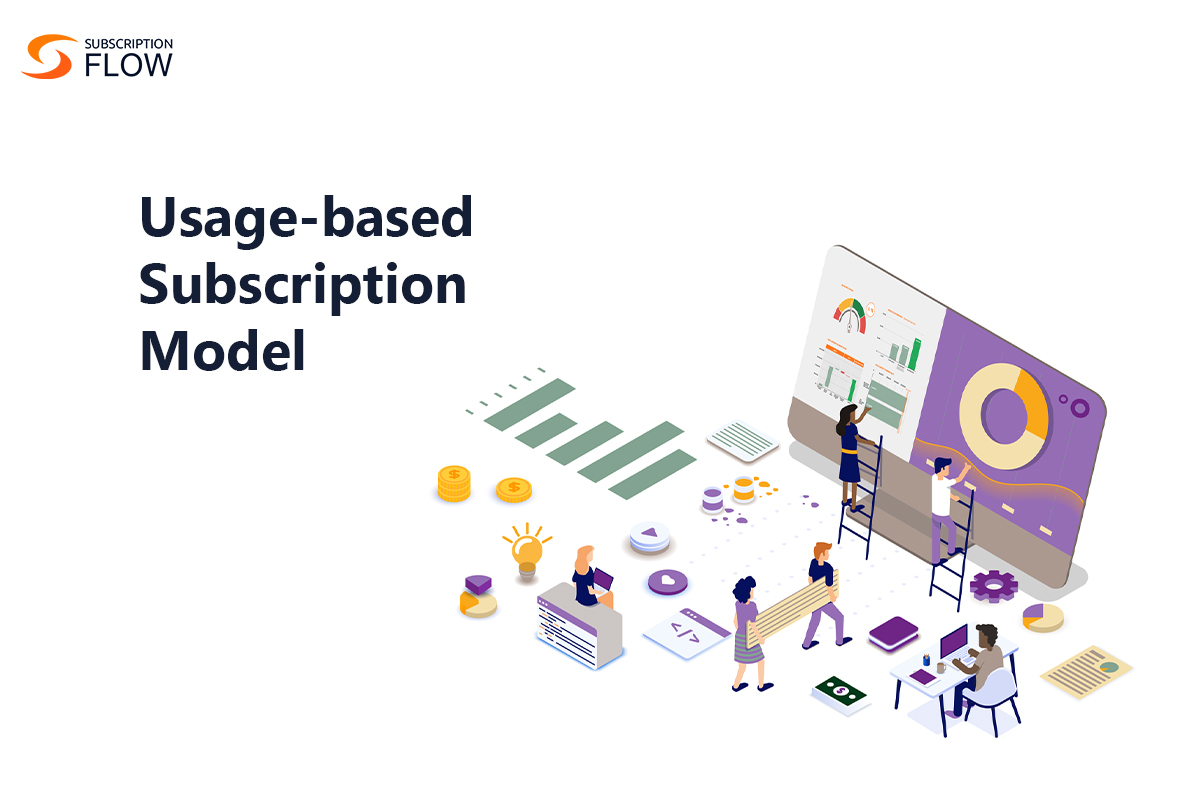
Why the Differences Between the Usage and Subscription-based Billing Models Matter?
A usage-based subscription model is something you might want to think about if you are searching for a way to expand your clientele and keep them as clients. Instead of charging a set monthly or annual cost, this kind of pricing approach bases consumer charges on how much they actually use your product or service. Usage-based subscription models can have a number of advantages such as boosting client retention, lowering churn, and matching revenue to value proposition. We’ll define a usage-based subscription model, describe how it operates, and discuss some recommended practices for successfully implementing it in this blog article.
In this blog, keeping this importance context in mind we will be going over further details of what a usage-based subscription model is before comparing it with the subscription-based billing model. In doing all this, we will be looking for the specific ways in which the usage-based subscription model is not only better than the subscription-based billing model but also what industries the former billing model is best suited for as a result of its benefits.
What is the usage-based subscription model?
In the usage-based subscription model, customers are charged for a service or product depending on how much they use it through a usage-based subscription model. You might, for instance, pay for a streaming service according to the number of hours you watch it or for a cloud storage service according to the amount of space you use. Customers that desire more control and freedom over their spending as well as companies looking to expand their customer base and boost income may benefit from this strategy.
A brief look at why you should choose the usage-based subscription model?
There are various benefits to choosing this choice, but the most significant one is that you only pay for what you really use. No more squandering money on features or services that are not utilized. Of course, as your demands change, you may scale up or down (and you always have the option to switch to a different plan if you choose that). Also, you even have access to the newest developments. Patch installation and software upgrades are not a concern because of this. The most recent version of the product is always available to you.
Furthermore, you benefit from improved dependability and security. Hardware malfunctions and data breaches are not issues you have to deal with. You can access your data whenever and wherever you choose because it is saved on the cloud. Additionally, the software’s staff of professionals is available to you around-the-clock and they will always be willing to assist you.
Read more: Navigating Subscription vs. Usage-Based Models: Which Fits Your Business Best?
How the subscription-based billing model differs from the usage-based subscription model?
The most obvious difference between the two models is as their names suggest—that of the former billing their users as per their usage whilst the latter billing them as per a fixed charging cycle. But there are other more minute differences as well, some of which we will go over in this section of the blog.
One key difference is that customers pay a predetermined, recurring cost often monthly or annually – in the subscription-based billing model in exchange for ongoing access to a good or service. Many commend this strategy for being predictable, which benefits both businesses and customers. Customers can budget for routine expenses, while businesses can rely on a steady flow of recurring income.
This gives the subscription-based billing model its arguably biggest advantage which is that of customer retention. Continual engagement that results in brand loyalty and decreased churn rates may be established by subscriptions. Additionally, it provides businesses with a stable financial foundation, which can encourage long-term planning and investment.
Which industries is the usage-based billing model best suited for?
This model is best suited for industries that offer flexible, scalable, and personalized solutions to their customers, such as cloud computing, SaaS, telecommunications, and media streaming, and, most importantly, utility billing. Usage-based billing allows customers to pay only for what they need and use, while giving providers the opportunity to increase revenue and customer loyalty by offering more value and customization.
Here is a further breakdown of the three industries that benefit the most from the usage-based subscription model:
1. Telecoms: The usage-based billing model is well-known in the telecoms sector. Customers are charged according to how many minutes they use for talking, how much data they use, or how many texts they send. This strategy enables telecom providers to accommodate a wide range of client needs and budgets, from light data consumers to frequent users.
2. Cloud computing: Usage-based billing is a method used by cloud service providers to charge users for computer resources, storage, and data transfer. These providers include Amazon Web Services (AWS), Microsoft Azure, and Google Cloud. Customers only pay for the resources they really use, making it affordable and scalable for organisations with varying demand.
3. Utilities: To bill consumers for the electricity, gas, or water they use, energy and water utilities frequently use usage-based billing. As a result, customers may manage their expenses by modifying their use and thus encourages conservation.
Read more: 17 Reasons To Go For Usage-Based Billing SaaS
The bottom line
A appealing alternative for companies looking to grow their customer base and improve client retention is the usage-based subscription model. This strategy matches costs with value, encourages flexibility, and develops customer happiness by charging clients based on their actual usage of a good or service. We examined the nuances of this payment model in this blog, contrasted it with the conventional subscription-based strategy, and outlined its benefits. Notably, the usage-based approach finds its best use in sectors like utilities, cloud computing, and telecoms as it allows users to only pay for what they use, boosting revenue and user retention for service providers.
Book a demo with SubscriptionFlow now to begin billing your customers as per their usage and not according to a fixed subscription cycle!










